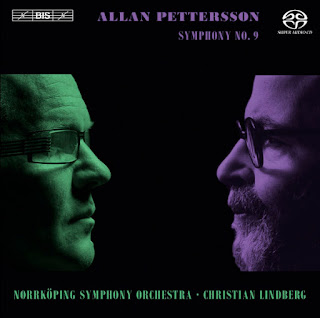"Pure substance“, Ewa Kupiec is praised by Fono Forum, Germany’s
leading magazine for classical music. The Frankfurter Allgemeine Zeitung
certifies: “Kupiec plays with a rare mixture of spirit, a faultless
technique, a complete understanding of musical texture and an ability to
shape music with transparency and an impressive richness of colours.
Her playing is brilliant but never obtrusive, full of atmosphere and
subtly virtuosic.”
Ewa Kupiec regularly performs at the world’s
leading festivals but also with major orchestras, which in recent
seasons have included Munich Philharmonic, Minnesota Orchestra, City of
Birmingham Symphony, Royal Stockholm Philharmonic, Royal Danish
Orchestra, Royal Philharmonic Orchestra, Warsaw Philharmonic, Royal
Liverpool Philharmonic, Melbourne Symphony Orchestra, Leipzig
Gewandhaus, and Orchestre de Paris. Conductors she worked include Marin
Alsop, Neeme Järvi, Ingo Metzmacher, Xian Zhang, Sakari Oramo, Semyon
Bychkov, Herbert Blomstedt, Krzysztof Penderecki, Lothar Zagrosek,
Gilbert Varga, Christoph Poppen, Andrey Boreyko, and Marek Janowski.
Renowned Polish maestro Stanislaw Skrowaczewski has initiated and
supported an exceptionally fruitful musical collaboration between the
two, and as such they have performed all over the world and, released in
2003, recorded Chopin’s piano concerti together.
2014 sees
four special releases: Polish composer’s Andrzej Panufnik’s piano
concerto for the complete recording of his œvre, together with the
Konzerthausorchester Berlin (cpo), Grażyna Bacewicz‘ piano quintet
arranged for piano and string orchestra for the Naxos label together
with the Bydgoszcz Philharmonic, piano quintets by Scharwenka and Dvorak
with the Armida Quartet (Solaris), and Chopin’s works for piano and
cello with Johannes Moser (Hänssler).
Ewa Kupiec is closely
connected to the music of Chopin and other Polish composers. For his
200th birthday she offered three different Chopin recital programs. Next
to standard works, her concerto repertoire includes works by Loewe or
Veress. For Sony, she has recorded Władysław Szpilman’s music, known
from the movie „The Pianist“.
In 2012 she played an especially
striking juxtaposition of the Paganini variations both by Rachmaninov and Lutosławski, together with the Leipzig Gewandhaus orchestra. A
dramaturgically wonderful incidence not only because he gave new luster
to the classical concert solo, but also because these are two of Ewa
Kupiec’ typical showpieces among which – next to Chopin’s work – Richard
Strauss early masterpiece Burleske can be found.
Equally
interesting are Ewa Kupiec’s solo and chamber music programs, for
example with cellist Johannes Moser or the Berlin Philharmonic Wind
Quintet. In 2013, which marks Witold Lutosławski’s 100th birthday, she
dedicates a special recital program to him – she worked with him when a
young pianist. She will also perform his piano concerto in 2013,
together with the German Philharmonic Orchestra Rhineland-Palatinate.
Ewa
Kupiec is recognised as one of Europe’s most dedicated interpreters of
contemporary music. Her Berlin Konzerthaus performance in 2005 of
Schnittke’s First Piano Concerto with the Berlin Radio Symphony
Orchestra was the first performance of this work since 1964 and was
released by Phoenix in 2008, together with other Schnittke works for
piano and orchestra. Her recital and chamber music programs often
include contemporary works, and different composers have dedicated
pieces to her.
Among Ewa Kupiec‘ numerous recordings are works
by Grażyna Bacewicz, Lutosławski, Szymanowsky (ECHO Klassik 1997) and
Paderewski. 2007 Haenssler released her recording of Janacek‘s solo
works and in 2008 Phoenix published Schnittke’s piano concerti with the
Berlin Radio Symphony Orchestra. 2010 saw the release of Żal, with solo
works by Chopin and Schubert, and in 2011, in cooperation with
Deutschlandfunk, she published a CD with solo works by Kodály and Enescu
(Solaris). 2012 saw the release of Chopin’s piano concertos and
Nocturnes selection on the Australian ABC label, and 2013 the premiere
recording of Lutosławski’s works for piano solo (Sony).
Ewa
Kupiec studied in Katowice, at the Chopin Academy in Warsaw and at the
Royal Academy of Music in London, and in 1992 she won the ARD Music
Competition (category duo piano/cello). From autumn 2011, she will be a
professor for piano at the Hochschule für Musik, Theater und Medien
Hannover.





























